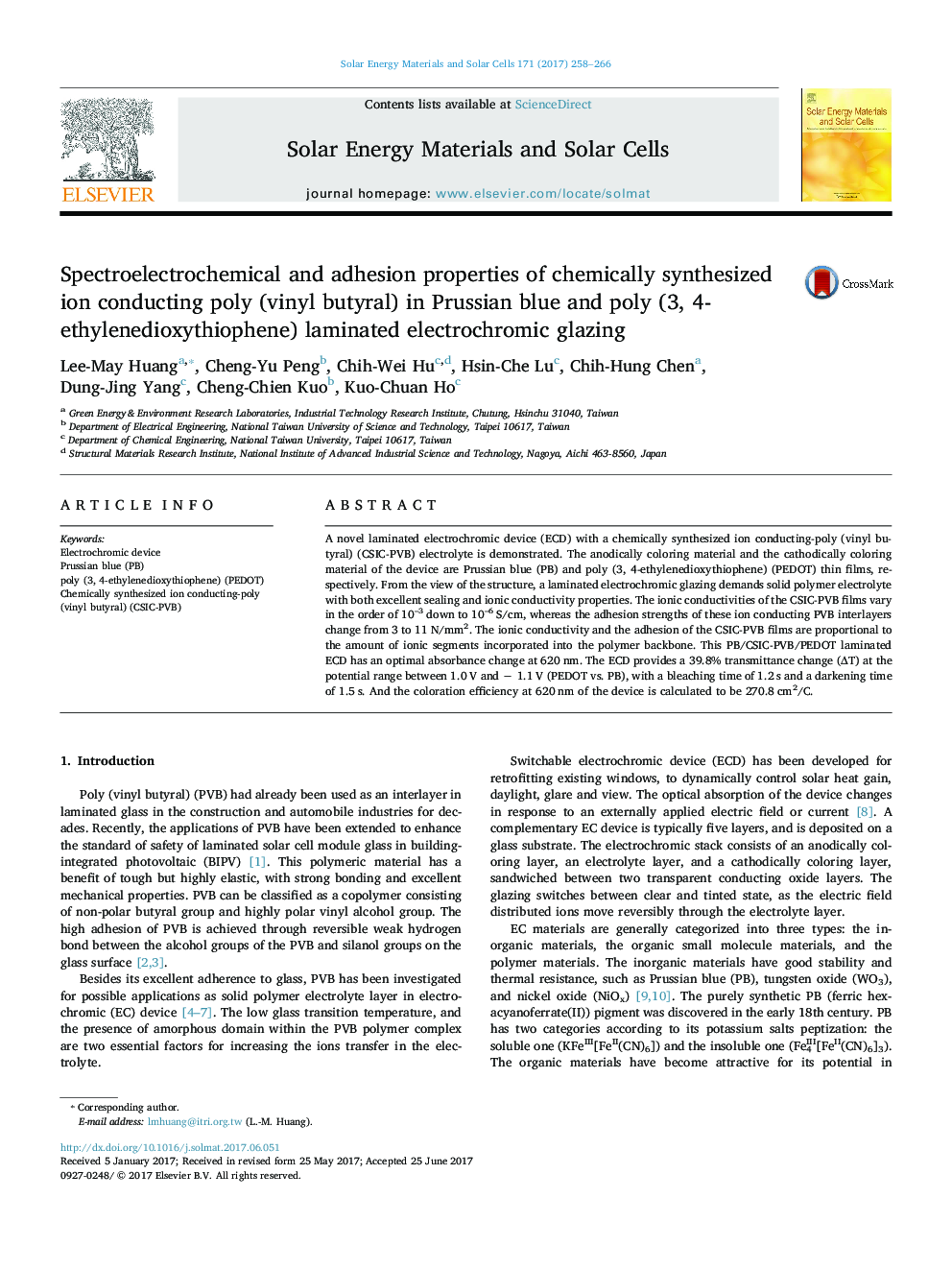| Article ID | Journal | Published Year | Pages | File Type |
|---|---|---|---|---|
| 4758719 | Solar Energy Materials and Solar Cells | 2017 | 9 Pages |
Abstract
A novel laminated electrochromic device (ECD) with a chemically synthesized ion conducting-poly (vinyl butyral) (CSIC-PVB) electrolyte is demonstrated. The anodically coloring material and the cathodically coloring material of the device are Prussian blue (PB) and poly (3, 4-ethylenedioxythiophene) (PEDOT) thin films, respectively. From the view of the structure, a laminated electrochromic glazing demands solid polymer electrolyte with both excellent sealing and ionic conductivity properties. The ionic conductivities of the CSIC-PVB films vary in the order of 10â3 down to 10â6Â S/cm, whereas the adhesion strengths of these ion conducting PVB interlayers change from 3 to 11Â N/mm2. The ionic conductivity and the adhesion of the CSIC-PVB films are proportional to the amount of ionic segments incorporated into the polymer backbone. This PB/CSIC-PVB/PEDOT laminated ECD has an optimal absorbance change at 620Â nm. The ECD provides a 39.8% transmittance change (ÎT) at the potential range between 1.0 V and â 1.1Â V (PEDOT vs. PB), with a bleaching time of 1.2Â s and a darkening time of 1.5Â s. And the coloration efficiency at 620Â nm of the device is calculated to be 270.8Â cm2/C.
Related Topics
Physical Sciences and Engineering
Chemical Engineering
Catalysis
Authors
Lee-May Huang, Cheng-Yu Peng, Chih-Wei Hu, Hsin-Che Lu, Chih-Hung Chen, Dung-Jing Yang, Cheng-Chien Kuo, Kuo-Chuan Ho,
